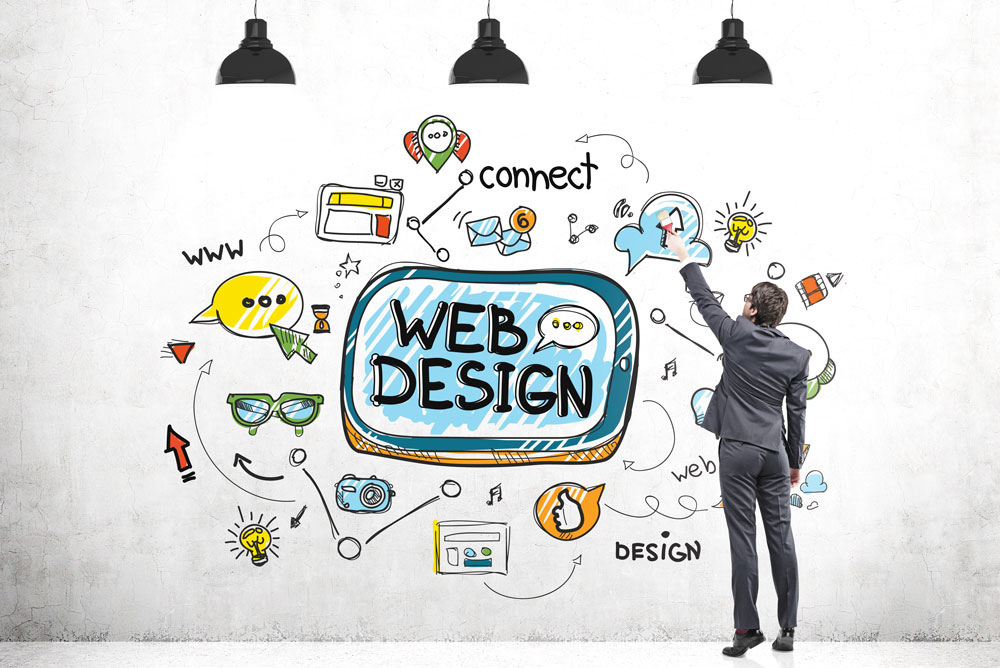Just How Reliable Web Design Can Boost Individual Experience and Conversions
In the progressively affordable digital landscape, efficient website design plays a crucial function in enhancing customer experience and driving conversions. By focusing on user-centric concepts, such as clear web content power structures and intuitive navigating, services can produce appealing platforms that not only bring in site visitors yet also promote smooth communications. As we check out the crucial elements that add to successful web layout, it ends up being noticeable that the impact on customer satisfaction and conversion prices is extensive. Understanding these characteristics might uncover approaches that can change just how individuals engage with your site.
Value of User-Centric Style
In the realm of website design, prioritizing user-centric style is critical for creating efficient electronic experiences. This approach concentrates on recognizing the requirements, choices, and actions of users, ensuring that digital user interfaces are user-friendly and accessible (Web design). By incorporating user responses into the style procedure, internet developers can craft experiences that resonate with their target audience, inevitably bring about raised interaction and complete satisfaction
User-centric style highlights functionality, which is important for maintaining individuals and lessening bounce prices. When individuals can browse a website effortlessly, they are more most likely to discover its web content and convert right into consumers. A user-centered approach cultivates trust fund and reliability, as customers really feel that their requirements are valued and resolved. This not only boosts their experience yet also encourages brand name loyalty.

Crucial Element of Efficient Layout
Effective design acts as the foundation of user-centric web layout, translating individual needs right into aesthetic structures that assist in communication. A well-organized design prioritizes web content via a clear power structure, leading users' eyes to vital info. This power structure is typically developed making use of size, spacing, and color, making sure that crucial aspects stand out.
One more crucial element is making use of whitespace, which avoids congestion and boosts readability. Web design. Whitespace enables elements to take a breath, making the total design appear cleaner and less complicated to browse. In addition, consistency in design components, such as font styles and colors, fosters familiarity and depend on, making it possible for customers to navigate the site with better simplicity
Grid systems can additionally be vital, providing a structure that straightens material practically and visually. This alignment boosts the individual experience by developing an organized visual circulation. Adaptability in format-- like responsive style-- makes certain that internet sites carry out well across different gadgets, providing to diverse user preferences.
Eventually, a reliable format not just astounds users yet likewise encourages them to engage more deeply, inevitably driving conversions and meeting business goals. By concentrating on these vital components, developers can develop formats that resonate with customers and improve their overall experience.
Navigational Finest Practices
Clear and user-friendly navigation is important for enhancing individual experience on a website. A well-structured navigation system permits individuals to locate details swiftly, which directly impacts their contentment and likelihood of conversion - Web design. Executing an ordered structure is necessary; utilize classifications and subcategories that rationally group associated material, making it More hints much easier for visitors to discover
Make sure that links, food selections, and switches keep uniformity in design, shade, and positioning across all pages, giving individuals with a familiar structure as they browse. Instead of generic terms, opt for clear labels that properly mirror the web content, assisting customers in making notified choices.

Mobile Responsiveness and Availability

Ease of access, on the other hand, focuses on making websites usable for individuals with specials needs. This includes adhering to guidelines such as the Internet Content Ease Of Access Guidelines (WCAG), which resolve concerns like shade contrast, message size, and keyboard navigating. By carrying out these criteria, internet designers can create inclusive experiences that satisfy a broader target market, consequently improving individual interaction and satisfaction.
In addition, mobile responsiveness and access not just improve user experience but also favorably effect search engine rankings. Search engines prioritize mobile-friendly and easily accessible websites, making them most likely to appear in appropriate search results page. Investing in these elements of internet style not only satisfies user requirements but likewise contributes to general organization success through boosted exposure and boosted conversion rates.
Measuring Success With Analytics
Tracking individual communications and habits via analytics is crucial for analyzing the success of a website. By leveraging tools such as Google Analytics, services can collect critical data that reveals how customers involve with their site. Metrics such as bounce prices, typical session duration, and go to my site conversion prices offer insights into customer behavior and can highlight areas for improvement.
Recognizing user demographics and web traffic sources better improves a website's efficiency. This information permits web designers to customize material and design components to better satisfy the requirements of their target market. In addition, tracking particular customer trips aids determine possible traffic jams in the conversion funnel, enabling companies to optimize their web design appropriately.
On a regular basis assessing this analytics data is crucial for constant improvement. A/B screening different design his comment is here components can supply concrete proof of what resonates with individuals, enabling for notified choices based upon real-world efficiency. Ultimately, measuring success through analytics not just boosts user experience however also drives conversions, ensuring that website design efforts straighten with organization goals. In an electronic landscape where competition is fierce, harnessing the power of analytics is vital to maintaining a effective and user-friendly internet site.
Conclusion
In final thought, efficient internet layout plays a crucial duty in boosting individual experience and driving conversions. Ultimately, gauging success via analytics allows for continual renovation, making certain that style methods remain aligned with user demands, thereby promoting business development and success.
In the increasingly competitive electronic landscape, effective internet layout plays an essential role in enhancing user experience and driving conversions. By integrating user comments into the layout procedure, web developers can craft experiences that reverberate with their target audience, ultimately leading to increased involvement and fulfillment.
Eventually, the significance of user-centric style lies in its ability to develop meaningful interactions that drive conversions and foster long-lasting relationships with users, making it an important part of successful internet layout strategies.
Eventually, measuring success via analytics not just enhances individual experience but also drives conversions, making certain that internet layout efforts straighten with business goals.In conclusion, reliable internet layout plays a crucial function in enhancing customer experience and driving conversions.